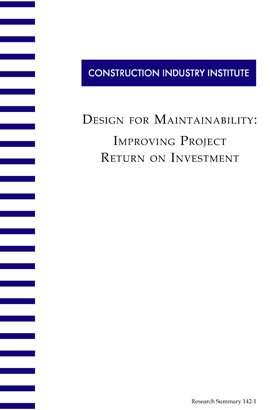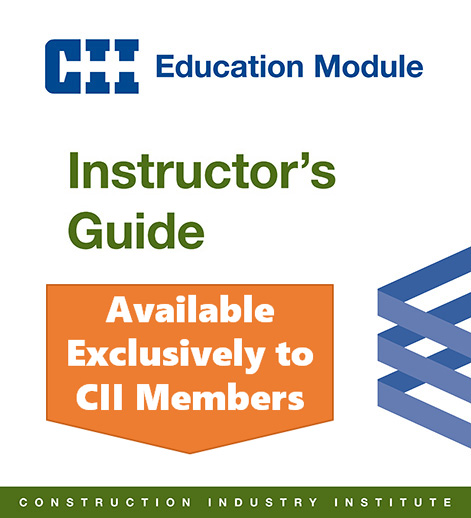
Design for Maintainability: Improving Project Return on Investment
Of the many trends that are forging their way onto the horizon of project planning, design for maintainability is one that holds great promise for improving the capital investment process. Design for maintainability, when incorporated effectively as a “best practice,” can enable less rework, smoother startups, and less costly maintenance after project completion.
The Construction Industry Institute (CII) chose design for maintainability as a topic of research because of the concern for more effective front-end planning, more efficient designs, and more prudent life cycle costs. The CII Design for Maintainability Research Team was formed to investigate the current state of maintainability practices that impact project design and construction, and to provide recommendations for improved processes that minimize life cycle costs. The results of the research team’s work are summarized in this publication.
The major contribution from the team is its CII Implementation Resource, Design for Maintainability Guidebook. That publication (CII IR142-2) helps the reader initially by defining the five levels of maintainability uncovered in the research. Second, the guidebook provides a self-assessment to help identify the user’s current level of maintainability. Once that is determined, the guidebook identifies not only 22 best practices, but contains 16 different tools that can assist the user in putting the best practices to work on actual projects.
Emerging trends in the Information Age often lean toward the technology end of the spectrum. Design for maintainability, however, is decidedly different. It simply requires corporate commitment and consideration as a “best practice.” Those companies that make the commitment to establish design for maintainability as a corporate best practice will be more likely to have both an improved rate of return on investment and more successful projects.
- Stand-alone approach which is specifically focused on achieving project maintainability goals only
- Combined approach where maintainability is part of a larger overall improvement program that may include reliability, constructability, value engineering, etc.
- Corporate Commitment
- Program Supports
- Maintainability Planning
- Maintainability Implementation
- Program Updating



